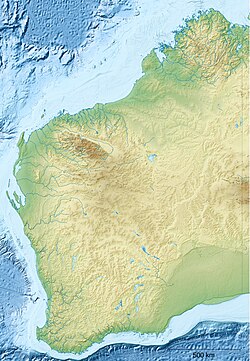History
Named after Captain Hedland, the master of a ship that anchored there in 1863, Port Hedland was first developed in order to service the needs of the local pastoral industry in East Pilbara. The first jetty was built in 1896, this was extended in 1908 after the discovery of gold in the Marble Bar area. [3]
Until the 1930s the port was predominantly used to import goods and stores for the local industries and to export pearl, shell, wool, livestock, gold, tin and copper. With the end of World War II, the port began exporting significant amounts of manganese. [3]
The 1960s saw the development of the port by the iron ore and salt industries. Mount Goldsworthy Mining Associates, a company later absorbed by BHP, dredged an approach channel and turning basin for 65,000 DWT ships. Meanwhile, the Leslie Salt Company, from August 2001 Dampier Salt (part of Rio Tinto), built a land backed wharf and facilities to aid salt exports and fuel imports. [3] [4]
Further dredging was performed after the Mount Newman Mining Company, a subsidiary of BHP, chose Port Hedland as its export port. The new works allowed for ships up to 120,000 DWT. [3]
Between the 1960s and today and extensive dredging and building has taken Port Hedland from a convenient anchorage to 15 berths capable of loading various ores and goods onto ships ranging from 25,000 DWT to 320,000 DWT. [3]
In 2005/06 Port Hedland became the first Australian port to export in excess of 100 million tonnes annually. In 2010/11 the port exported a record 199 million tonnes, making it the largest port by cargo tonnage in Australia. [3]
In 2021/22, 561 million tonnes of cargo passed through the port. [5] In 2023/24, over 7,000 bulk carrier vessels (about half of them iron ore) visit the ports in Pilbara. [6]
Port authority
Port Hedland's harbour is managed by the Pilbara Port Authority, a Government of Western Australia instrumentality. The port authority's headquarters, control tower and heliport are at Mangrove Point, just to the west of The Esplanade at the western end of Port Hedland.
The tugboat pen, customs office and public jetty are at nearby Laurentius Point. The harbour's wharves are located on both sides of the harbour – Finucane Island to the west and Port Hedland to the east.
This page is based on this
Wikipedia article Text is available under the
CC BY-SA 4.0 license; additional terms may apply.
Images, videos and audio are available under their respective licenses.







